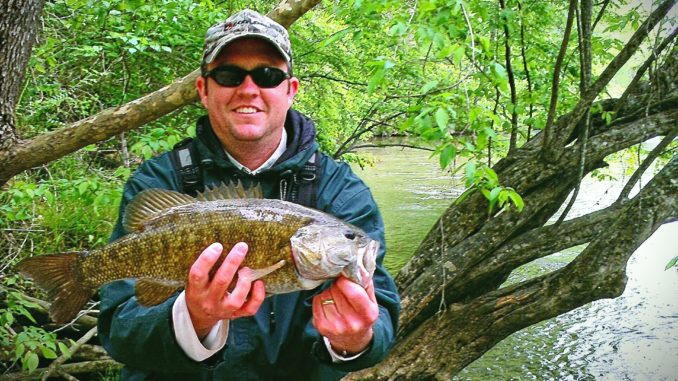
Put a canoe or kayak into the upper Dan River and you’re likely to run into plenty of smallmouth bass.
Mention the Dan River, and most residents of North Carolina immediately think of Duke Energy’s coal-ash spill near Eden in February 2014. That accidental discharge into the river made and continues to make headlines, and because of the dangerous elements and compounds that wound up in the Dan, many people believe the entire river is contaminated.
Nothing could be farther from the truth, particularly in the river’s upper reaches and specifically the stretch 70 miles west of Eden that meanders through Stokes County.
Kyle Hoover of North Carolina River Angler LLC and his fishing buddy, Greg Dralle, know that section of the river as well as anyone.
“It’s not polluted up here because we’re upstream of the spill,” he said. “In fact the Dan River has some of the cleanest water in this section of the state, and it has plenty of smallmouth bass.”
Hoover, a pro staffer for Native Watercraft who lives in Oak Ridge, does most of his guiding from canoes or kayaks.
“Kayaks are perfect fishing platforms for river smallmouths, especially the Dan,” said Hoover, who will often use roomier canoes when he takes a fishing party down the river.
Hoover and Dralle like to begin spring float trips at a river access west of Hanging Rock State Park.
“The Piedmont Land Conservancy owns 282 acres, and we helped build a canoe access on South Double Creek,” Hoover said.
They launch canoes and kayaks and float downstream to the Dan River Company takeout in Danbury, a trip that takes approximately eight hours.
One day last April, Hoover and Dralle parked at a field beside the South Double Creek access and slid a canoe and a kayak into the river, which was gin clear, with rocks in 4 to 8 feet of water as clearly visible as if they were only 6 inches beneath the surface.
“If you get in the main current, you go faster,” Hoover said. “If you want to go slower, get near the shore, and you’ll be out of that faster water.”
Trying to fish for smallmouths in a fast current is difficult. Anglers may bypass good-looking water without giving it a thorough lure test. To slow the pace, Hoover and Dralle guided their watercrafts closer to the shoreline.
“You look for breaks in the current,” Hoover said. “On the side of the break next to the shoreline, the current’s not as fast.”
Learning to see current breaks isn’t difficult or time-consuming, and it offers a fishing advantage. Obvious break indicators are leaves or small sticks on the surface, floating almost in a line. But if there’s nothing floating on the surface, look for the separation between slack and swirling surface eddies.
“Smallmouths like to hang out near breaks,” Hoover said. “They don’t have to expend as much energy in slack water.”
Hoover positions his canoe or kayak on the inside of a break, then casts and retrieves his lures parallel to the break.
“Sometimes you might see an eddy or other spot you want to fish without moving much,” Hoover said. “I like to use soft-plastic lures and move slowly (downriver).”
More-advanced canoeists or kayakers also sometimes position themselves behind a large boulder where a swirling eddy produces a mini-hydraulic that holds a watercraft in place, leaving an opportunity to make multiple casts and cover “fishy-looking” areas.
“Sometimes we put a canoe or kayak on the shore, get out and cast,” he said.
Islands are favorite places to stop and fish, and the upper Dan has several.
“I’d suggest wearing waders,” Hoover said. “You may need to step out in water. In the spring, you don’t want your feet or legs getting wet when the water’s cool.”
Islands also are excellent places to stop and stretch legs, which can get cramped after several hours of sitting in a canoe or kayak.
“Islands also are good places to stop and have a meal,” Hoover said. “You can’t hold a drink, eat a sandwich and try to guide a canoe and fish.”
Hoover said two main types of tackle will work well for smallmouths on the Dan — ultralight and light spinning or spin-casating tackle and fly rods.
“I like Shimano Soltice 2500 reels on a 6- to 6 1/2-foot Berkley Ugly Stik rod when I’m spin fishing from a canoe,” he said. “If I’m in a kayak I like a 7-foot rod.”
He spools reels with 6-pound Berkley Nanofil Low Viz green monofilament line.
“In the spring, I usually stick to casting brown and black creature baits,” said Hoover, who rigs them weedless to prevent snags, which can be a problem when floating downriver.
Creature baits resemble crawfish, a favorite of stream smallmouths. Hoover likes a Yum Craw Papi, but he’ll also fish a Yamamato stock worm, a Gulp leech or a Bass Pro Shops Tender Tube.
“If you like hardbaits, one of the best is a Rebel Crawfish,” said Hoover, who also likes to fish a spinnerbait. “As for fly rods, you can use a 5- to 8-weight rod. A 5- or 6-weight is sufficient for popping bugs. Streamers also are good fly-rod lures, including the Gonzo fly. It’s a big, meaty fly. Hammerhead Wasp flies also work well.”
If an angler wants to catch 3- to 5-pound smallmouth, the Dan River isn’t the top place.
“Most Dan smallmouths are from 10 to 14 inches, but you can catch the occasional 14- to 18-inch fish,” Hoover said. “You might hang a 3-pounder, but it’s not an everyday thing.
“What draws people to Dan River smallmouths is their strength. They’re strong fish because they live in current all the time. If you hook a river smallmouth and he turns sideways, a 2-pounder on light tackle or a fly rod can feel like a 5-pound largemouth.”
DESTINATION INFORMATION
HOW TO GET THERE — The Dan River stretches across several counties, but a popular point to start floats near Hanging Rock State Park west of the town of Danbury in Stokes County. From Winston-Salem, take US 52 north to NC 8 and north to Danbury. Madison and Eden also offer easy access to the river. Madison can be reached via US 311 from Winston-Salem and US 220 from Greensboro. Eden is best accessed from Greensboro via US 29 north and NC 87.
WHEN TO GO — April through June.
BEST TECHNIQUES — Ultralight spinning rods in 6-, 6 1/2 and 7-foot lengths mated with reels spooled with 6-pound monofilament are commonly seen along the Dan River. Texas-rigged creature baits, Senko-style baits and soft-plastic crawfish are top lures, along with spinnerbaits. For fly fishermen, 5- to 8-weight models are sufficient. Popping bugs and streamers are popular with anglers carrying fly rods; the Gonzo fly and Hammerhead Wasp flies are local favorites.
FISHING INFO/GUIDES — Kyle Hoover, NC River Angler LLC, 336-254-6857, www.ncriverangler.com. See also Guides and Charters in Classifieds.
ACCOMMODATIONS — Whippoorwill Inn, Danbury, 336-420-6003; Budget Inn, Madison, 336-548-6011; Shayona Inn, Eden, 336-623-1500.
MAPS — DeLorme’s North Carolina Atlas & Gazetteer 800-561-5105, www.delorme.com.

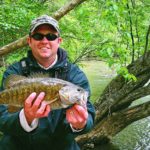
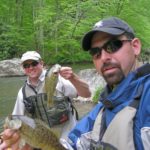
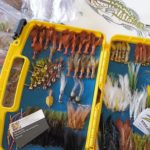
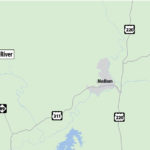

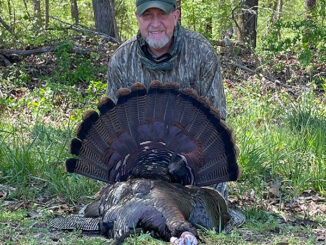
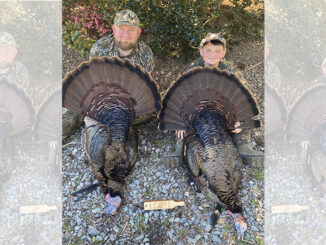

Be the first to comment